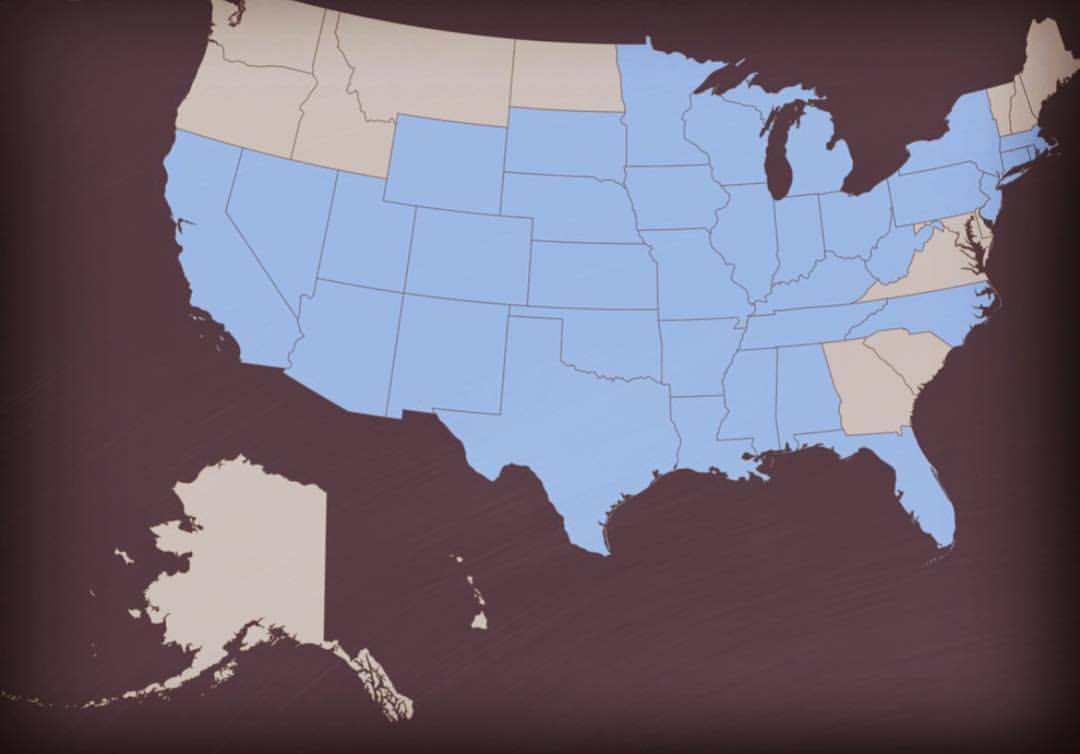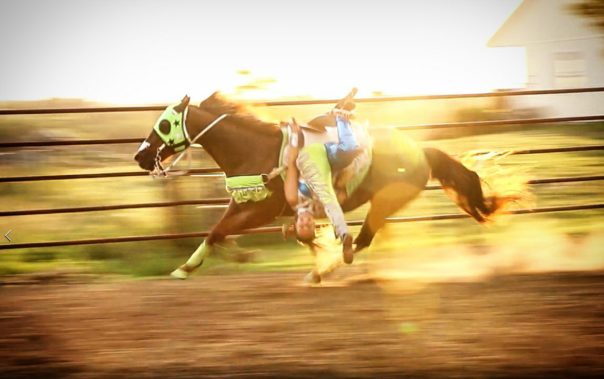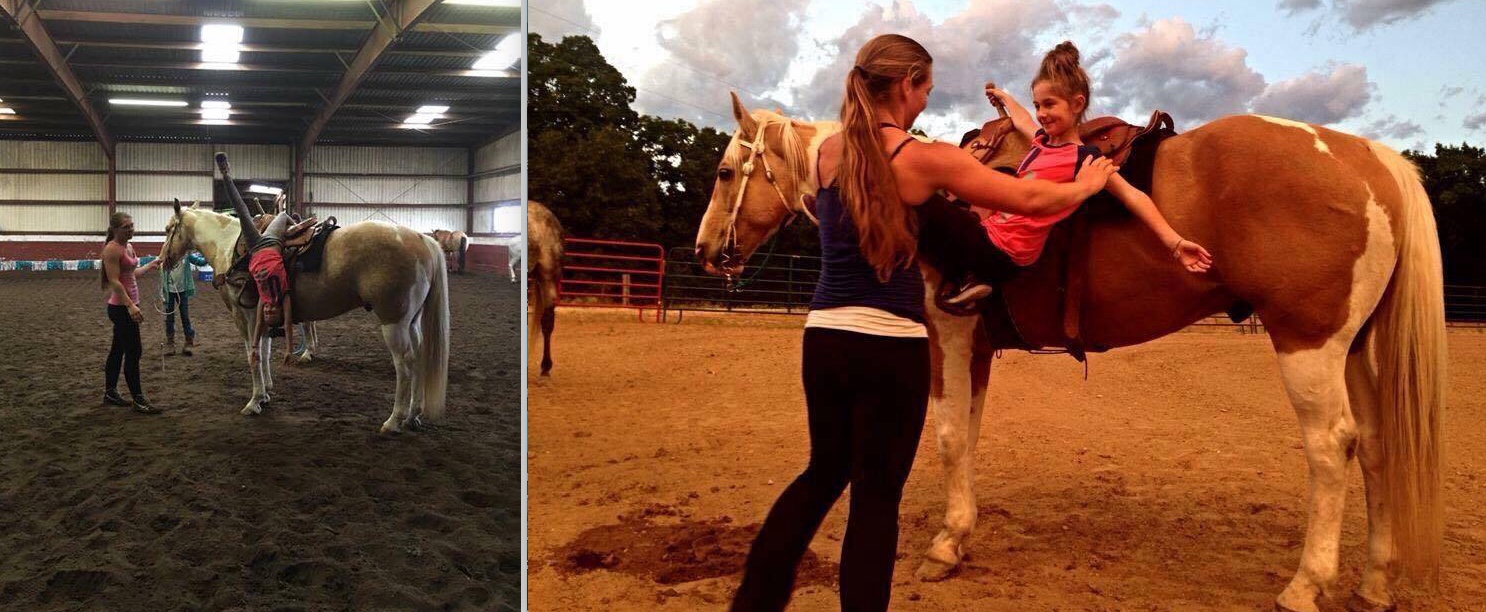Catch Up With Trixie Chicks Trick Riders, Performers USA Canada Circuit
“That's right, we do our own stunts.”
Teamwork between horse and human – the Trixie Chicks Trick Riders, founded in 2010 by Shelby Epperson, currently owned by team rider Kelsey Temmen. Based in Missouri, the performers have traveled the USA and Canada – September scheduled performances include Dayton, Iowa; Albuquerque, New Mexico; Kansas City, Missouri. July was Edmonton and Calgary, then Timber Lake, South Dakota. Here's a link to follow their circuit – or follow their travels and adventures via Facebook.

This is Kelsey Temmen performing the Hippodrome Stand on “Cookie” – image linked to the official site.
For those who want to emulate these riders, some things you ought to know. Riders strive to promote the legacy of trick riding with professionalism and integrity – and value “safety, horsemanship, and showmanship.” Temmen holds a bachelor of science in animal science, minor in equine studies, from Missouri State University, with an emphasis in agricultural business and agricultural communications. Earned a master of education in equestrian education from William Woods University. Has more than five years trick riding performance experience; more than 12 years equine experience. Trick riding competition titles include International Trick Riding Team Champion – Trixie Chicks (2015 Lindale, TX) and International Trick Riding Women's Champion (Lindale, TX). International Trick Riding Open Champion 2016). NFR WildCard Recipient. Calgary Stampede Canadian Trick Riding Competition Open Champion. North American Trick Riding Championships Open Women's Champion. Trick riding training: Miko McFarland (2012, 2013, 2014, 2015), Red Top Ranch Trick Riding School (w/Karen Vold, Linda Scholtz, Melissa Pfaff, Candy Rodewald & Ryan Rodewald) (2013, 2014, 2015, 2016, 2017), Austin Anderson & Texas Trick Riders (2014, 2015), Madison MacDonald (2014, 2015, 2016), Ginger Duke, Josey Lynn & Dynamite Dames (2014), J.W. Stoker (2014), Jerri & Staci Diaz (2014, 2015), S. L & Loretta Pemberton (2016), Vicki Tyer (2016), and Rae-Lynn Armstrong (2016). Whew. More about team members linked here.
Editor's note: After learning about Trixie Chicks Trick Riders from their recent appearance and performance in Connecticut at the Goshen Stampede PRCA Rodeo, then at a PRCA Rodeo in Massachusetts, curiosity prompted a follow-up question and answer with Kelsey Temmen owner/performer. She and “Cookie” – her 12-year-old American Quarter horse – competed in the 2016 North American Trick Riding Championships in Las Vegas where the duo was crowned Open Women's Champion.
Can you explain how you got involved with trick riding?
I love being involved in sports! I was in track and field and cheerleading for 6 years in high school and have been super competitive. In college, Shelby (Epperson, founder of Trixie Chicks) was actually going to be performing at one of our horse association events – I didn't know her at the time. When I met her, the rest is history – it has been the best decision and career choice ever.
What are some of the key skills to being a trick rider?
Strength, confidence, horsemanship, daring, showmanship, attentive, thrill-seeking.
How is a horse selected for this? And for performing?
Our horses have to be able to handle the mental and physical demands of our job. They have to be super strong and athletic as well as extremely fast. We prefer a willing partner that loves the job and wants to perform.
What is a routine week for you and your team? Hours, sessions, practice?
Craziness!!!! Every week is completely different. We try to balance practicing between rodeos and making sure that our horses get enough breaks for them to mentally and physically rest as well.
Are you born and raised in Missouri?
Yes! I married my high school sweetheart and we now live on part of his family farm. It's the same town where we went to school together as well.
How many states do you travel and what do you like best about the show circuit?
We have traveled through over 32 states and two countries since 2013. We love the adventure that every rodeo brings and the new people we get to meet.

We haven't been EVERYWHERE, but it's on our list. Here's a sneak peak of where the past 5 years of trick riding has taken us. Where do you want to see the Trixie Chicks perform next year or in the future. From a post on the team's Facebook page, linked.
What are your impressions of New England?
Everyone was very nice and welcoming to us – and we only got honked at two times!
How did you decide to step up into the owner of a business?
Shelby Epperson handed the business over to me when we became to get more busy with our rodeos and the amount of time and effort needed for clerical work and planning became greater. I love the responsibility and the marketing/advertising skills that it has allowed me to gain.
Any advice for those aspiring to be a trick rider, or are there opportunities to learn from you and your team? Can you tell us about that?
Please seek out professional training and equipment in order to learn safely. We are available for trick riding clinics around our rodeo schedule and would be happy to speak with you about the opportunities available – via Facebook, Instagram or email trixiechickstrickriders@gmail.com; call (573) 694-8423. Upcoming events are on our website at www.trxchx.com.


